Wondering what the different types of tomatoes are? Our guide will help you learn about all the different kinds, from beefsteaks to cherry tomatoes.
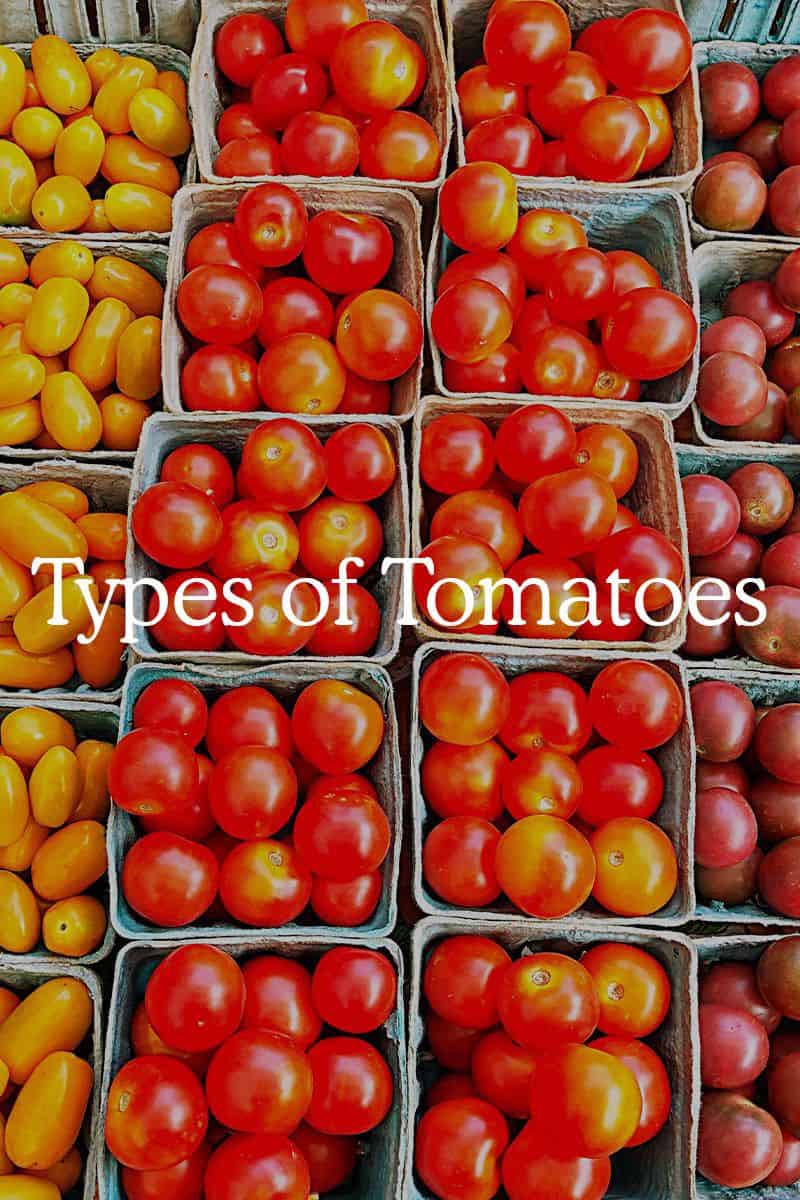
Tomatoes are an incredible fruit. Having a myriad of uses, tomatoes are as diverse as people, but, of course, in different ways.
Different types of tomatoes have different DNA that makes them tall or short and they can be mixed to create a hybrid breed that produces the best aspects from both parents.
Furthermore, they are sortable by size and shape such as round and plump to small and cherry-like to looking like a heart.
They also vary in color, and flavor/taste from yellow to black and sweet to sour. This article covers the types of tomatoes, their colors and flavors, and their uses in detail for an extensive overview of this delicious, unforbidden fruit.
The Different Types of Tomatoes

Hybrid vs. Heirloom – What are they?
The size or shape of a tomato has nothing to do with whether it is a hybrid or heirloom variety. In fact, the difference is all about the DNA of the tomato.
Hybrid
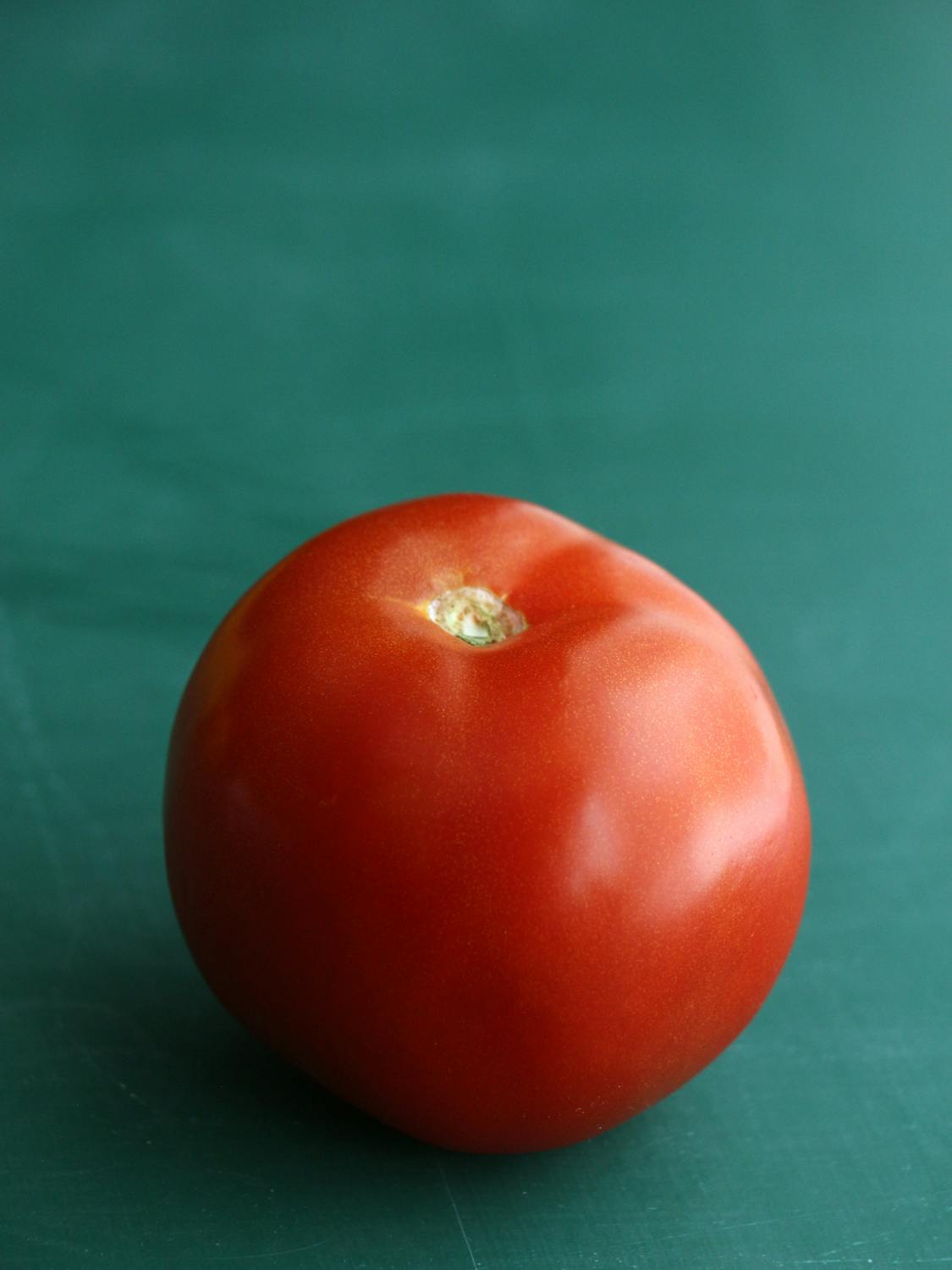
Hybrid tomatoes, such as Sun Gold, Better Boy, and Juliet are not GMO plants but are instead a simple crossbreed that takes advantage of the best traits of each of the parent plants.
They are bred using natural methods to produce certain types of tomatoes. For example, a variety that produces a higher yield or has better resistance to disease.
Hybrids can occur naturally thanks to pollinators such as bees or they can be created with a cross-pollination done by plant breeders. These tomatoes are known for their reliable productivity, ease of growing, and disease resistance.
Heirloom
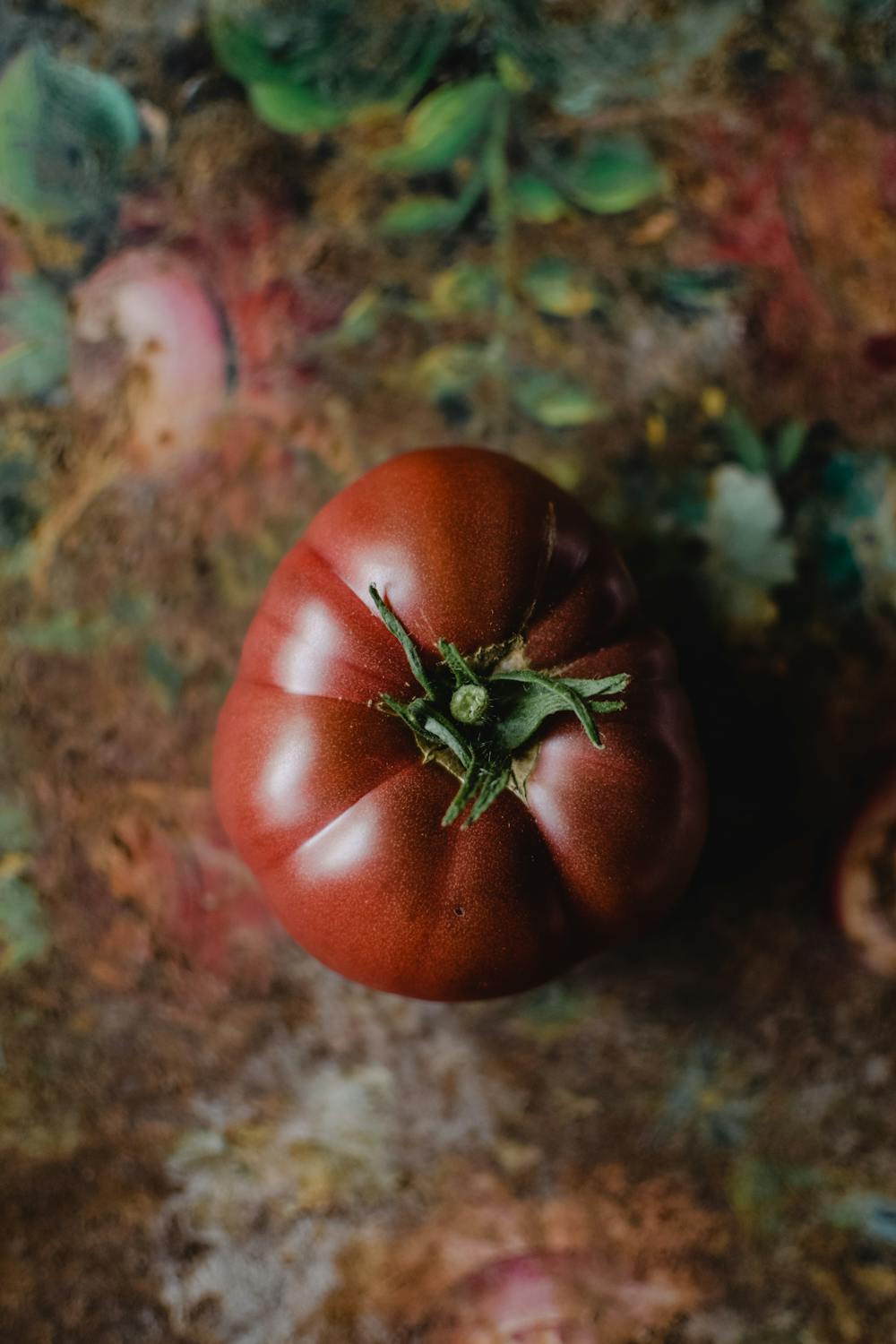
Heirloom tomatoes, such as Pink Brandywine, Cherokee Purple, and Arkansas Traveler can be thought of as a family heirloom passed down generations.
These tomatoes are varieties that are open-pollinated and self-fertile which means that they rely on insect pollination, like the hybrid tomatoes, but these plants are often defined as a breed that has lasted for two generations – around 40 to 50 years. They are known for their excellent flavor and interesting variety in sizes and colors.
Hybrid vs. Heirloom – Difference
The biggest difference in these types of tomato plants is that hybrid tomatoes do not grow “true to seed” and will instead possibly create a different-looking or different-acting plant than the parent hybrid plant.
This is in comparison to the heirloom tomato plants which do grow true to the plant. This alludes to the idea that seeds can be taken from an heirloom tomato, planted, and the results will be the same as the tomato the seeds were taken from.
While hybrid and heirloom are the most common, there are a select few types of tomatoes that are neither. Rather, they are known as “heritage” or “modern heirlooms” and are open-pollinated varieties bred during the last generation by tomato cultivars.
Determinate Tomato Plants vs. Indeterminate Tomato Plants
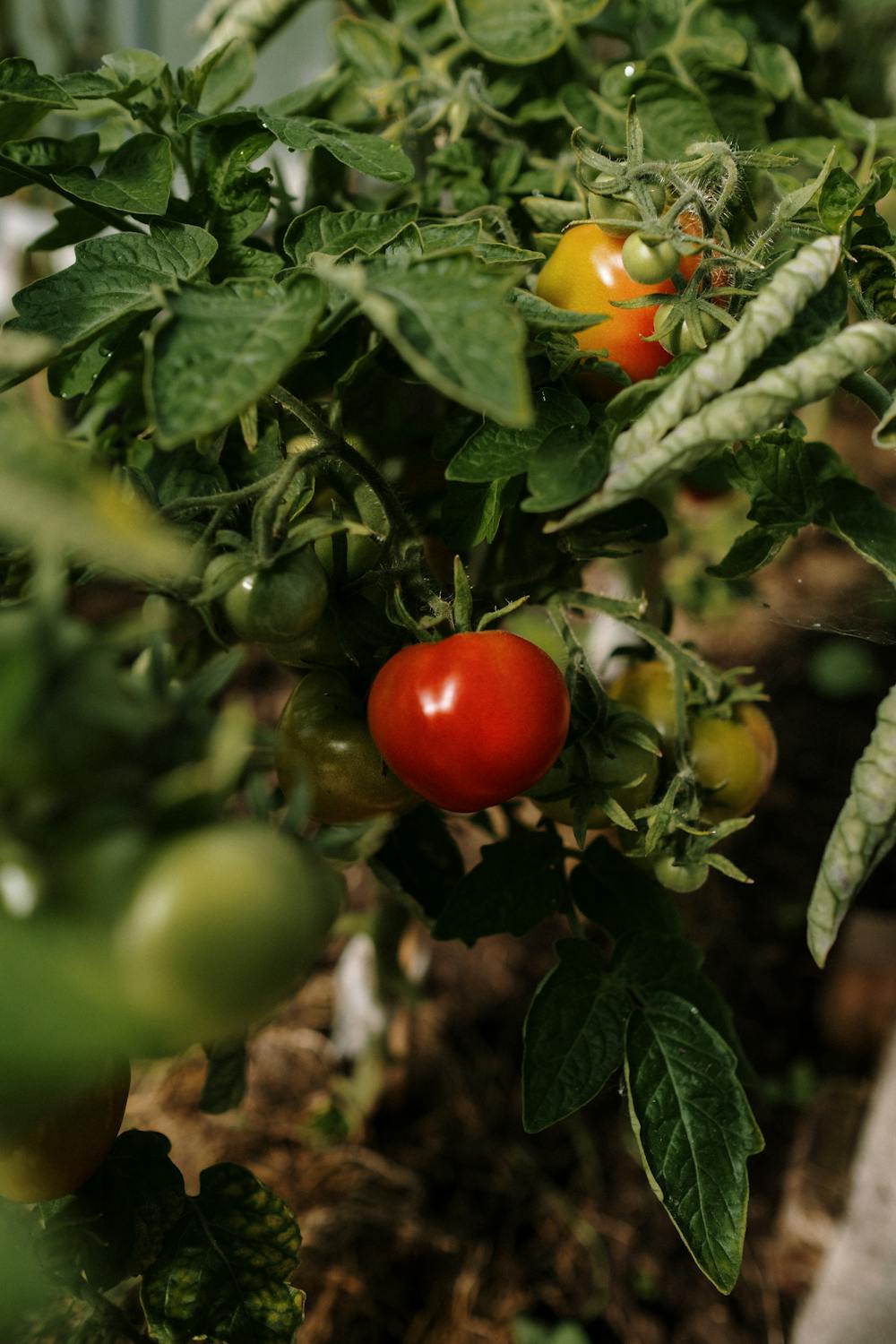
Determinate tomato plants, such as Roma, Better Bush, and Celebrity are plants that tend to be shorter as they stop growing once they reach a certain height.
Their determined height is what makes them great for smaller spaces such as a deck or small garden. They also produce fruit in a short amount of time – not all season long. The fruit of a determinate tomato plant ripens all at one time.
Indeterminate tomato plants, for example, Chocolate Sprinkles, Mr. Stripey, and Bonnie Original are the opposite – they grow continuously and produce fruit throughout the season until a frost hits.
Some varieties can grow to be up to 15 or 20-feet tall which means the plant requires a lot of room to grow as well as support to stay standing tall.
In order to tell the difference between the two, besides the obvious height, indeterminate tomatoes form flowers along the sides of the plant shoots while determinants stop their shoot production once flowers form on the ends.
Types of Tomatoes by Shape & Size
1. Standard Globe Tomatoes
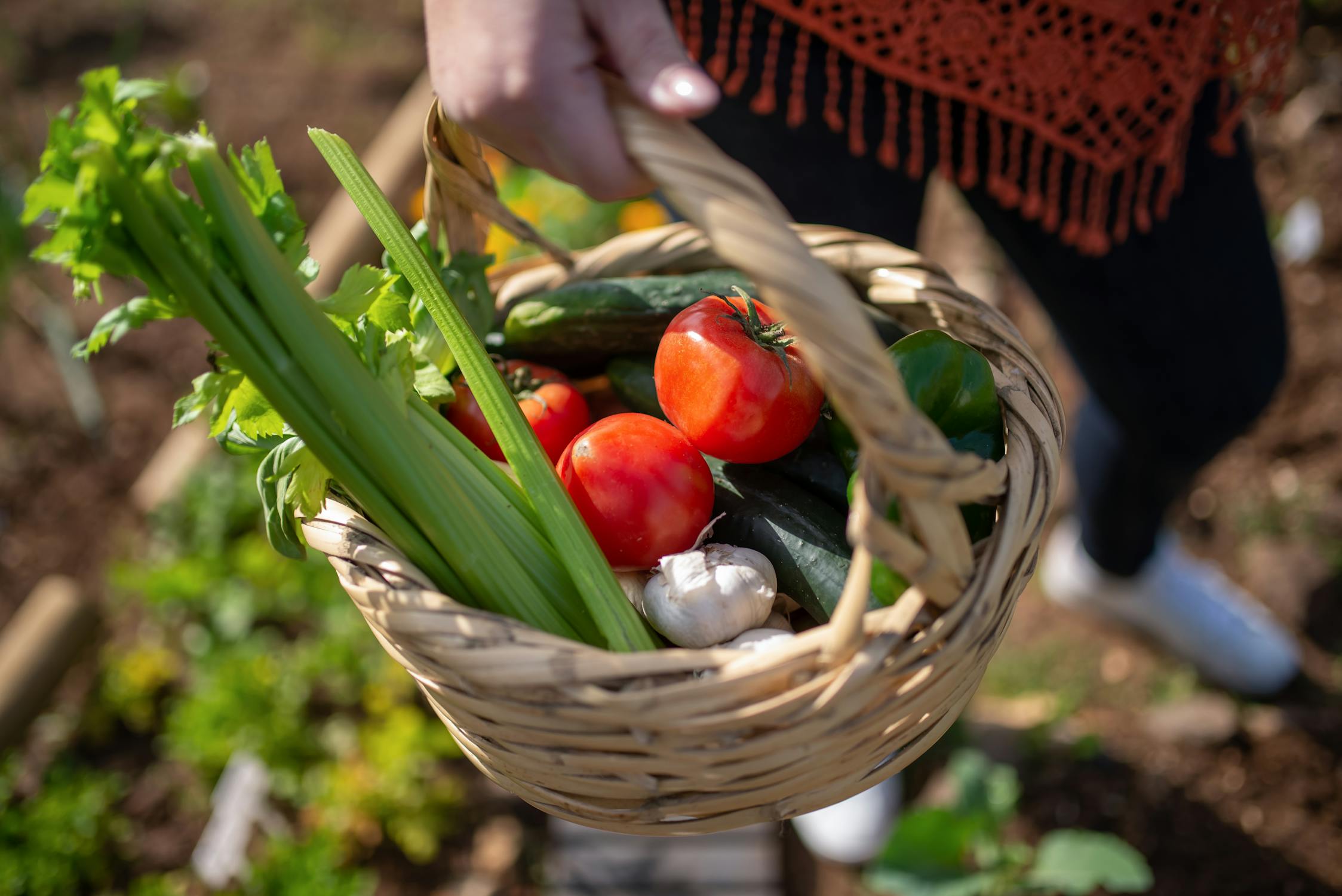
These tomatoes are the standard, everyday tomatoes coming in at 2-2.5 inches (5-7 centimeters) across. They are medium-sized and are easy to slice for salads and sandwiches.
Examples of a Standard Globe Tomato are the Valencia Tomato, St. Pierre Tomato, Early Girl Tomato, and the Moneymaker Tomato. While they are often red, they do come in other colors, too, such as the Green Zebra variety.
They were bred to have thick skin, be round, and have a uniform look to them. These characteristics are what make them the standard “grocery store” tomato. They are classically domesticated which means they are grown both in open fields and in greenhouses.
Standard Globe tomatoes are also incredibly shelf-stable meaning they last a long time and are versatile in culinary uses. They are able to readily withstand the hardships of commercially-grown tomatoes such as shipping and storage. Their thick skin is what helps them make great sliced tomatoes for sandwiches but they are also great for grilling, salsa, juicing, canning, and in egg dishes – such as an omelet.
2. Beefsteak Tomatoes
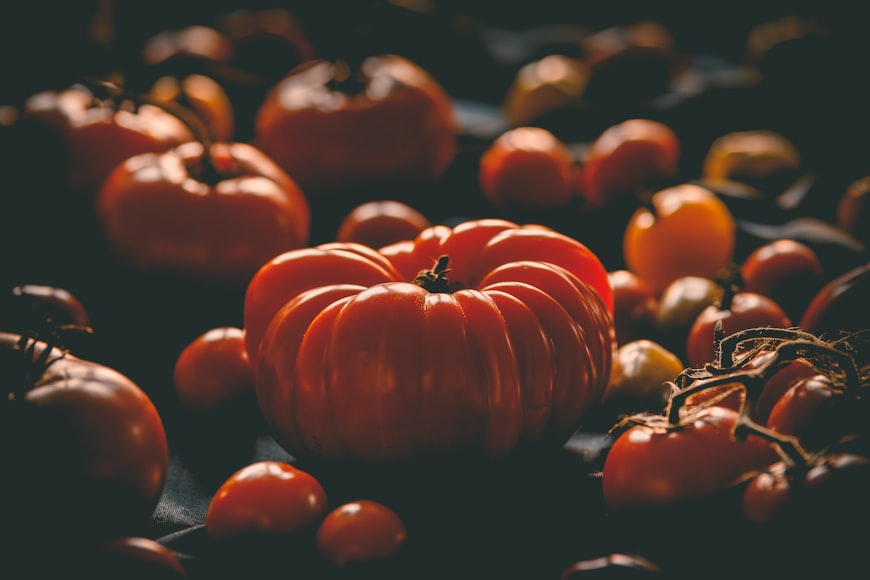
Brandywine Tomato, Black Krim Tomato, German Johnson Tomato, and the Big Rainbow Tomato are all common varieties of beefsteak tomato. However, the Domingo Tomato is the ultimate example of a beefsteak tomato as it is the current record-holder for the heaviest tomato.
This type of tomato is also known as a large, “slicer” tomato due to its delicious taste, large size, and common use (sliced, on a sandwich). It also has an incredibly thick consistency and that thickness holds shape when being sliced which is also what helps give them that name. Most beefsteak tomatoes weigh around a pound each and are double a Standard Globe Tomato at 3-4 inches (7-10 centimeters) across.
Not the most aesthetically pleasing tomato, most varieties of beefsteak tomatoes are lobed, slightly flattened, and have small seed cavities. These tomatoes weren’t bred to be pretty. Rather, they were bred for color, size, and flavor. They aren’t often grown commercially since they have a short shelf life (when ripe) and take a long time to mature.
3. Cherry Tomatoes
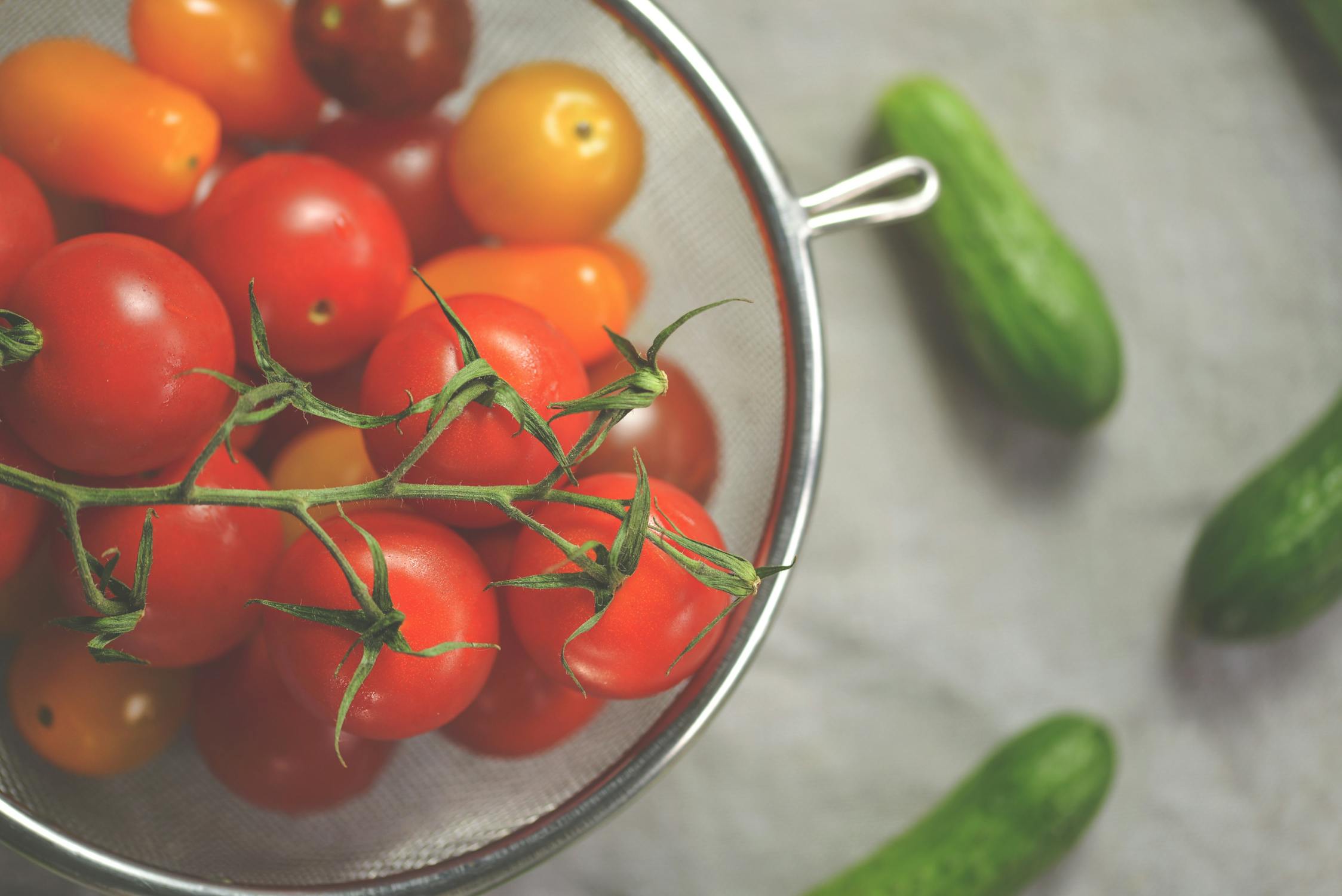
Cherry tomatoes are the cute, baby tomatoes of the types of tomatoes that exist. They are often under an inch (2.5 centimeters) in diameter, but some can grow up to the size of a golf ball.
They are small, bize-size, and incredibly juicy. Coming in oranges, purples, yellows, and reds, as well as pear-shaped, spherical, or oblong sizes, these tomatoes are incredibly versatile.
Cherry tomatoes work great in veggies wraps, salads, and are especially great for snacking on raw, in fruit and veggie platters, hors d’oeuvres at a dinner party, and charcuterie boards. Some common cherry tomato varieties are the Tiny Tim Tomato, Yellow Pear Tomato, Sunrise Bumble Bee Tomato, and the Riesentraube Tomato.
4. Plum Tomatoes
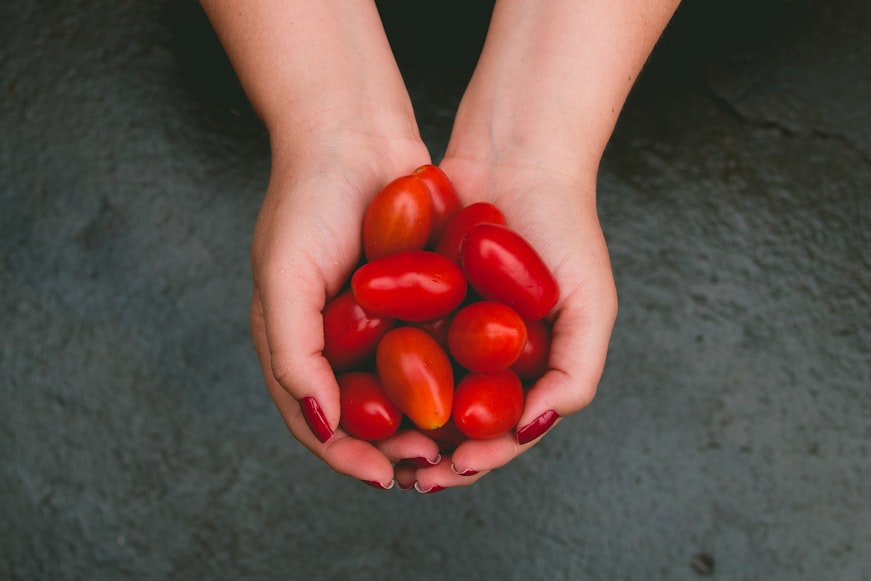
The Plum Tomato, San Marzano Tomato, Supremo Tomato, and the Orange Banana Tomato are varieties of plum tomatoes which make wonderful tomatoes for sauces and pastes.
Plum tomatoes are often red in color and are also known as paste tomatoes and processing tomatoes for this reason. They are grown to be cooked or canned – not eaten raw; although, one could eat them raw and be fine. Around the same size as Standard Globe Tomatoes at 2-2.5 inches (5-7 centimeters) in size, they are almost always a cylindrical or oval shape.
Considering they are firm, hearty, and solid, they are perfect for making tomato sauces. They can also be processed into a thick paste or canned whole for storage.
Their seeds are easy to remove and most varieties are bred to also shed their skin easily which facilitates the processing of the tomato pulp into the sauce. They are perfect to use when a juicy tomato variety isn’t required such as in sun-dried tomatoes or on top of a pizza.
5. Oxheart Tomatoes
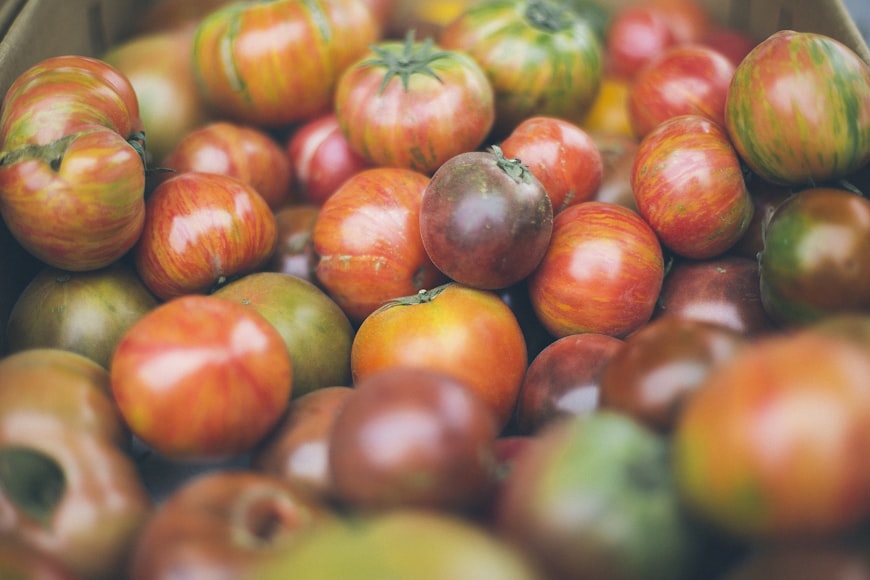
The name “Oxheart tomatoes” gives it away. These tomatoes are unique in that they are shaped like a heart or strawberry – therefore, Oxheart. The shape is because of a mutation that causes the blossom end on the bottom to elongate.
They are mainly heirloom tomatoes, can reach up to two pounds in weight, and are grown for their size, flavor, or thick consistency with small seed cavities. It also vary in taste and color.
They range from savory to slightly sweet to acidic in flavor and come in red and pink colors mostly. Although, they can also be found in green, purple, yellow, and orange, too. Oxheart tomatoes are comparable to Beefsteak Tomatoes in use as they are best for canning and slicing.
The Cour di Bue Tomato, Hungarian Heart Tomato, and the Yellow Oxheart Tomato are all good examples of Oxheart Tomatoes.
Tomato Colors and Flavors
Tomatoes come in a varietal rainbow of colors: red, pink, orange, yellow, green, black, brown, and purple.
Plus, there are striped tomatoes, too. Each color can give a hint about the tomato’s flavor and possibly even the growing conditions it was in. Size, of course, also affects flavor. Smaller, cherry tomatoes are sweeter than larger tomatoes due to a higher concentration of sugar. There’s a tomato for every taste.
1. Red tomatoes

Red tomatoes are more acidic and have a robust taste to them such as the Super Fantastic, Heinz Classic, and Bonnie Central varieties. When used for a sauce or a paste, the flavor of red tomatoes intensifies the more they are heated up and cooked.
2. Pink tomatoes

Pink tomatoes have a great balance of acid and sugar – sweet, but mild. They taste “old-fashioned” or “classic” and can be exemplified by the Pink Girl, German Queen, and Arkansas Traveler varieties. They are versatile in their use since they can be used for canning, freezing stewing, and, of course, eating fresh.
3. Orange or Yellow Tomatoes
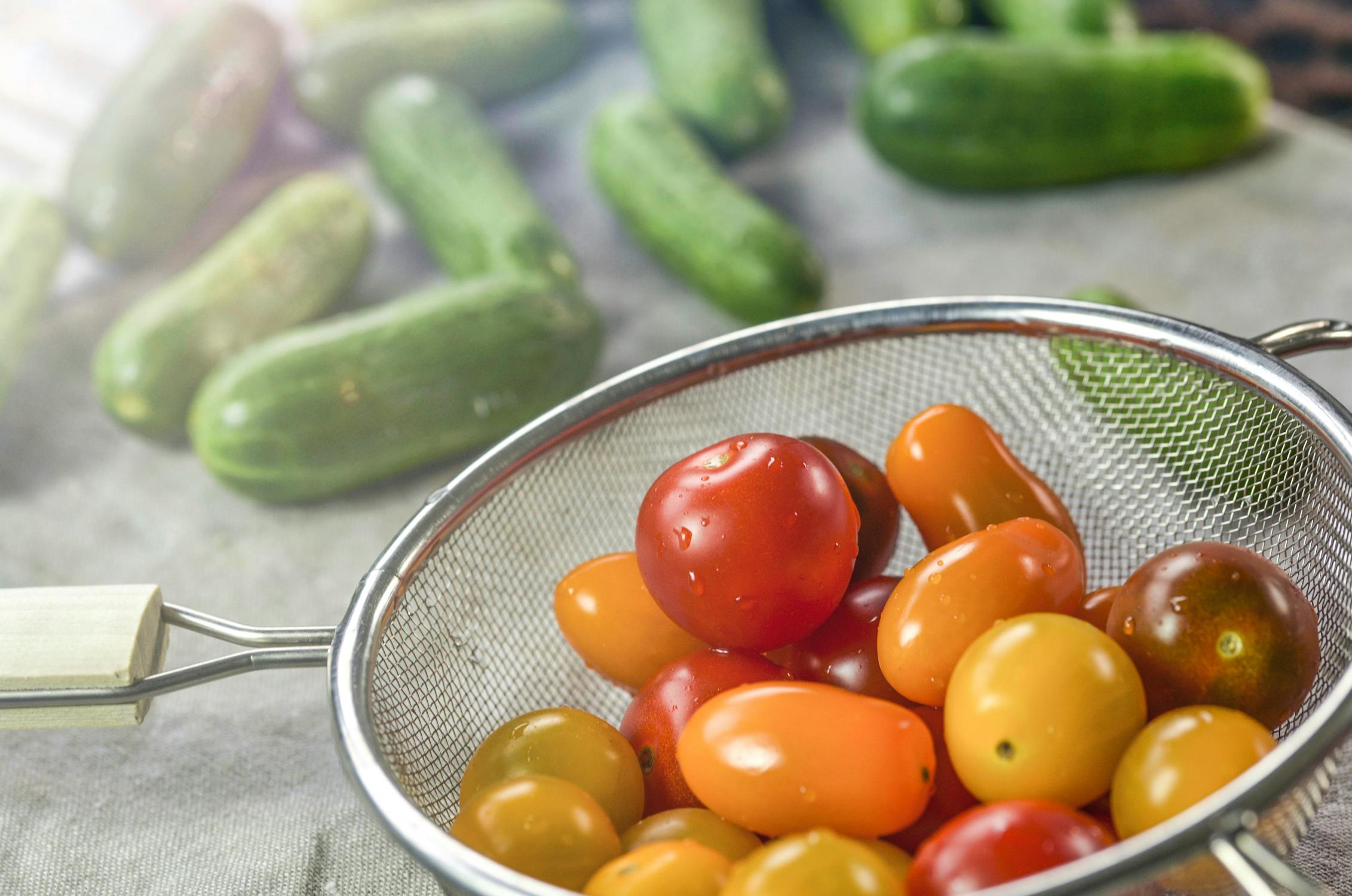
Tomatoes have bright yet mild flavors such as the Lemon Boy, Golden Sugar, and Golden Jubilee varieties. They deliver a sweet (almost candy-like) to fruity flavor. Aside from eating fresh, these tomatoes are great for juicing and for salsas.
4. Green tomatoes

A special type of tomato on their own since they are often picked prematurely and aren’t a variety of themself.
However, there are two types, the unripe red tomatoes and varietal (normally heirlooms) that have a naturally green color once fully ripe. An example of a green heirloom variety is the Green Zebra. They are firm, crunchy, and acidic but soften and mellow as they cook – they aren’t normally eaten raw.
5. Darker brown, black or purple tomatoes

Darker brown, black and/or purple tomatoes, such as the Black Cherry, Chocolate Sprinkles, and Cherokee Purple varieties, have an earthy taste to them making them more complex, and in some cases “smoky”. In terms of acidity, they are comparable to the red tomato and therefore are also ideal for use in delicious sauces.
6. Striped tomatoes
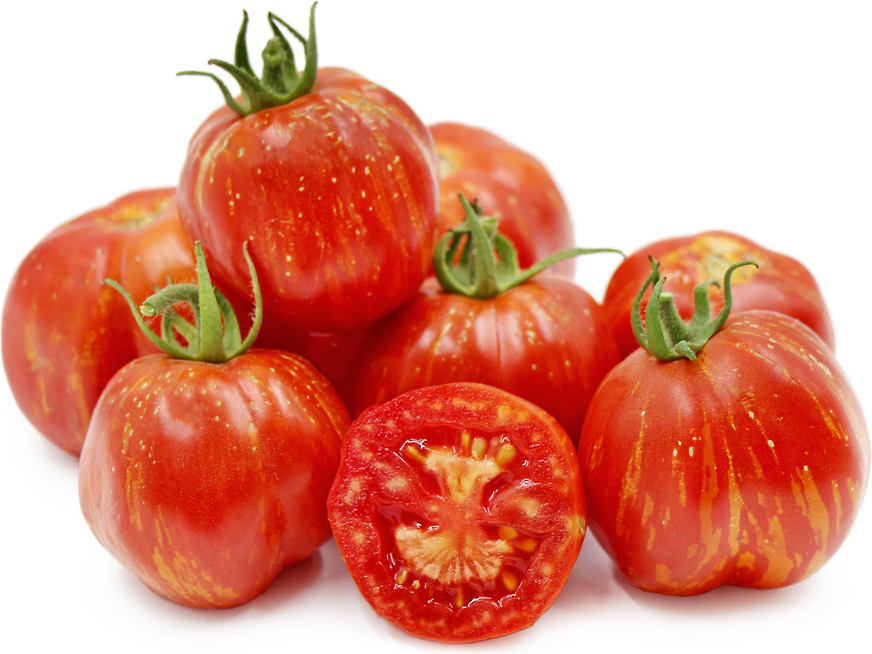
Striped tomatoes, like the Mr. Stripey tomatoes, are high in sugar but low in acid which makes them have a sweet, fruity taste and also makes them ideal for salsa and canning.
Tomato Uses

Different tomatoes are great for different things and not one-tomato-fits-all.
Salad and snacking tomatoes are small, bite-sized tomatoes – often called grape or cherry tomatoes – that are fantastic for eating straight off the vine or adding to salads. Common bite-sized tomatoes are Tami G Grape, Sun Sugar, and Sweet Million.
Slicing tomatoes are juicy, large, and round fruit that, when sliced, fit well on a sandwich. There are moderately-sized varieties such as the Easy Girl and the Rutgers or larger, beefsteak varieties such as the German Johnson or Red Beefsteak.
Tomatoes are the staple ingredient for sauces and pastes. The varieties used to make these are dense and meaty such as the Roma, Heinz Super Roma, and the San Marzano.
Conclusion
Tomatoes are diverse and come in a range of different shapes and sizes. However, not every tomato is the same in taste and consistency. It is good to know the different types of tomatoes and the categories they can be split up into.
For example, hybrid vs heirloom, determinate plant or indeterminate plant, the types of tomatoes by shape, colors, flavors, and uses. Knowing what tomato is best for what use (such as slicing and grilling for a burger or for use in a salad) will make all the difference to the taste pallet.
If you loved this post about the different types of tomatoes, consider checking out these article.



